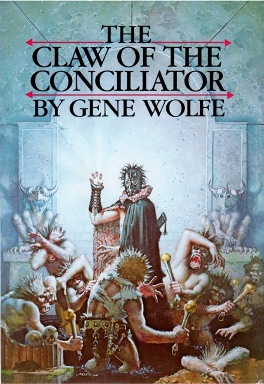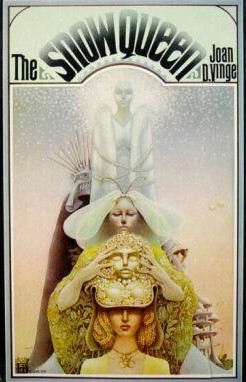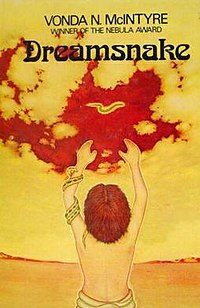I had hoped that Foundation’s
Edge would be at least mediocre since the original books were good but alas
no. Foundation’s
Edge is the worst book to the Hugo since 1955’s They’d Rather be Right, which an observant reader may remember is
generally considered the worst book to win the award.
Foundation’s Edge is set over a hundred
years after Second Foundation. The Foundation
is at the height of its power. It controls, directly or indirectly, around half
the planets in the galaxy and recently resolved a Sheldon Crisis (the turning
points in history where Sheldon would appear in holographic form to discuss
what is happening). Most of the population believes that the Second Foundation
has been completely destroyed. Except for councilman Golan Trevize. He has a
long tedious debate with Mayor Harla Branno, leader of the Foundation, which
ends with him exiled from Terminus. This is all an elaborate cover, however, as
the Mayor actually wants him to go search for the Second Foundation. So she
gives him an advanced ship and companion, the historian Janov Pelorat.
Obstinately they are looking for the original world of mankind. At the same
time, ambitious Second Foundationer, Stor Gendibal, is sent to follow them.
What follows is a very talky story where plans within plans are revealed and
the fate of humanity is determined by the generally unlikable Trevize.
Foundation’s Edge commits the biggest
sin a book can commit: it’s boring. Much of the book is taken up by meetings
and dull conversations as characters endless debate philosophical or political
matters. I am not saying that the book needs to full of wiz bang action but
something needs happen. Characters travel to a place, talk, then travel to a
new place and do the same thing. This structure might work if any of the places
they traveled were interesting. But that does not happen. The planets that they
visit are not interesting. Asimov’s whole galaxy is uninteresting. There are no
aliens, no exotic living creatures, and no strange political systems. The book
states that every planet that can bear life only had microbes when humans
arrived and were all seeded with earth planets and animals. When Trevize and
Pelorat visit a planet outside the Foundation space, the place feels no
different from Treminus. Even the Second Foundation’s society of telepaths is
not really that different. Everyone even speaks exactly the same language! It’s
too orderly and too pat. Asimov showed in The
Gods Themselves that he can create different societies but there does not
show here at all. Great science fiction should make me want to learn more about
a world but I could not care less about this one.
Asimov’s fourth Foundation book also
does the worst thing that a sequel can do: it undoes much of what was great
about the original works. The point of psycho-history is that it used
mathematical modeling to deduce the movements of human history on a galactic
scale. In Foundation’s Edge this that idea is tossed aside as the mental
machinations of powerful telepaths shown as the real power behind history. The
telepaths on the planet Gaia (spoilers) are so powerful that they negate
everything else from the book. Asimov even managed to ruin The Mule, the most
interesting characters from the previous books, by making him a runaway from
Gaia rather than a true mutant. The whole book reminds me how George Lucas
wanted to change original Star Wars Trilogy to confirm to the prequels instead
of understanding that it was the originals that were better and the new stuff
needs to conform to it.
All this begs the questions if it
is so terrible why did Foundation’s Edge
win the Hugo? My guess is that it something I’m going to call the Phantom
Menace Syndrome. In 1998, I went to see Star
Wars Episode 1: The Phantom Menace opening day. When it was over, I lied to
myself and said it was great. I wanted to believe it was great because I loved
Star Wars so much and because we the fans had waited so long for a new movie.
It was only after viewing it a few more times (too many honestly) that I came
to realize that it was not a good movie and worked against much of what was
great about the original trilogy. I have a feeling that many people felt this
way about a new Foundation book. There was a nearly 30 year gap and Asimov admitted
that he wrote it on the urging from his publisher. Fans wanted to like so it
won. It’s a shame because The Sword of
the Lictor by Gene Wolfe (3rd book in the Book of the New Sun tetralogy) was also nominated and is a far more
deserving winner. Really I can’t promote that series enough.
How disappointing it turned out
this badly.. I hope that the next winner, David Brin’s Startide Rising, will be an improvement, though even how
disappointing Foundation’s Edge was,
it should not be too hard.






